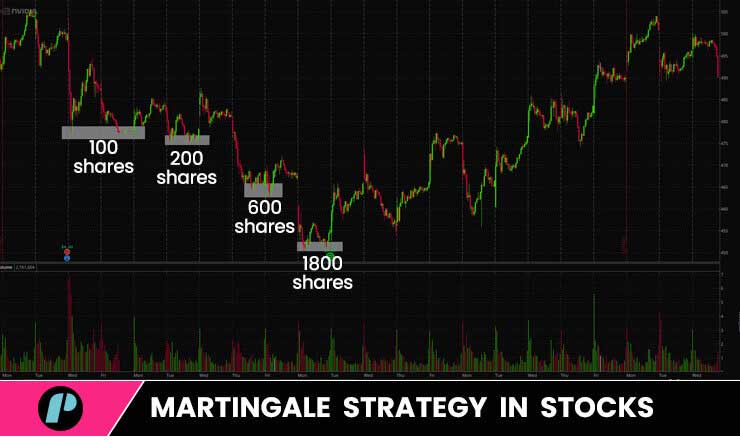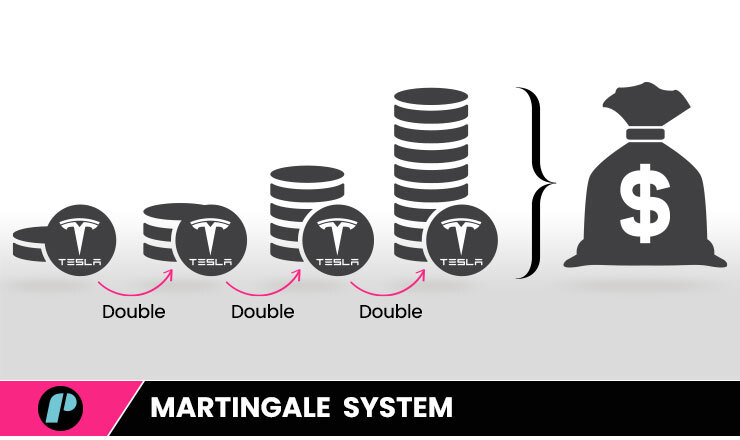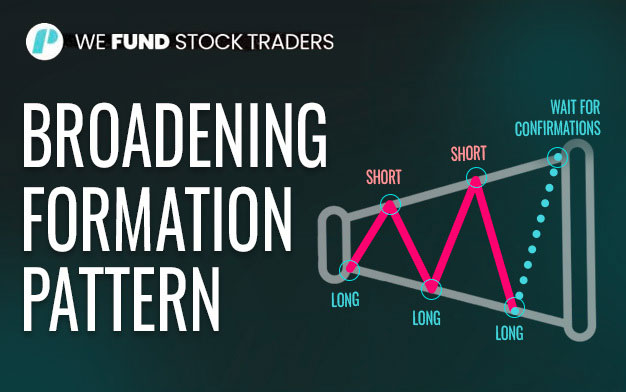
Introduction
In 18th-century France, gambling at casinos was a big thing. Everyone was at it. Not just the common people, that is, but also nobles, intellectuals, royalties, and scholars of the most diverse disciplines.
Betting (and gambling in general) was so popular that it was commonplace for the brightest minds in Paris to meet up and conduct studies to create successful betting strategies based on mathematical probabilities. Many fortunes were made and lost in French casinos but some of those 3 centuries-old strategies survived and some have even gone as far as becoming actual stock trading strategies.
One of such strategies, the Martingale Strategy, is the topic of today’s article. Let’s just delve into it.
Key Notes
- The Martingale trading strategy derives from a 300-year-old betting system.
- It was created for betting in 50/50 chance games.
- The strategy consists of doubling down on losing bets/trades aiming to still make a profit with the first winning one.
The Martingale Betting Strategy
As we just briefly mentioned, the Martingale strategy is a betting system that originated in 18th-century France. It’s based on the idea that if you double your bet after every loss, eventually you’ll win and recover all your losses plus a little extra.
Today, the Martingale strategy is mainly used and applied in gambling, particularly in games with a 50/50 chance of winning, like flipping a coin or betting on red/black or even/odd in roulette.
The Martingale Trading Strategy
Applying the Martingale system to create a stock trading strategy is a whole different ball game. Trading stock (as well as any other financial asset) involves a lot more complexity and risk than a simple game of chance. However, some traders have attempted to adapt the Martingale strategy to their stock trading approach and some have even had great success with it.
In theory, the idea is to double down on your stock investment every time it goes down in value. The belief is that eventually, the stock will rebound, and you’ll recoup your losses plus make a profit. For short sellers, intuitively, the opposite would be true.
However, despite the seemingly sound logic behind the theory, when put into practice, the reality is not quite as simple.
What are the challenges that the Martingale Trading Strategy presents?
One of the major challenges with applying the Martingale strategy to stock trading is that the stock market is inherently unpredictable.
Stocks can plummet for reasons that have nothing to do with their intrinsic value, and there’s no guarantee that a stock will ever recover after a steep decline.
Moreover, in order to execute the Martingale strategy effectively and guarantee a positive result in 100% of cases, traders would require an infinite supply of money. In a perfect world, it might work, but in the real world, most traders don’t have unlimited funds to keep doubling down on losing stocks, and no way to work out how many consecutive losses they are likely to have at any given time.
Another major concern, of course, is the emotional toll of this strategy. Watching their portfolio balance take a nosedive and then being required to invest even more money can be incredibly stressful for traders and lead to significant psychological strain.
Furthermore, the Martingale strategy doesn’t take into account external factors that can influence stock prices, such as economic conditions, geopolitical events, or industry trends. In other words, it lacks a fundamental analysis of the stock itself and the market in which it operates which would otherwise be a very important aspect of everyday trading.
That being said, there are traders who have had some success with the Martingale strategy in certain market conditions.
Some traders believe that in a highly volatile market, doubling down on falling stocks might eventually lead to a profitable outcome. However, it must be said that these instances are rare and far between and often involve an element of luck rather than a sound, sustainable strategy.
Key Notes
- Theoretically, the Martingale Strategy requires an infinite amount of money to guarantee success.
- The strategy lacks consideration for any external fact that might affect price.
- Having to double down on losing trades can take a toll on traders’ psychology.
It is quite clear that the Martingale strategy applied to stock trading is a risky proposition. It’s based on the flawed premise that losses will always be recouped with a subsequent win, which is not necessarily the case in the stock market. Moreover, it’s financially impractical for many traders and can lead to significant losses if not approached with extreme caution.
Conclusion
While it’s important to explore different trading strategies, it’s extremely important to approach them with a healthy dose of skepticism and a thorough understanding of their limitations. The Martingale strategy may work in certain controlled gambling scenarios, there is no doubt, but when it comes to the stock market, it’s far from a sure bet; unless, of course, you have a bottomless wallet and an infinite supply of money.
Ultimately, not all roads have a quicker shortcut and successful stock trading requires a comprehensive understanding of market dynamics, thorough research, and a well-thought-out strategy able to account for and estimate both potential gains and losses.
While the Martingale strategy might hold some allure and appear very attractive as a quick-fix approach, the reality is that sustainable success in stock trading requires preparation and a much more nuanced and well-informed approach.
Remember, it’s essential to do your homework, and approach trading with a level head rather than relying on a high-risk strategy with questionable long-term potential. As always, have a solid risk management strategy before you begin.
So, if you’re considering the Martingale strategy in stock trading, approach with caution and take the time to consider alternative, more robust strategies that have proven successful in the long run, like the ones you can read about and learn here at Trade the Pool.
I hope this helps.
If you liked this post make sure to share it!








